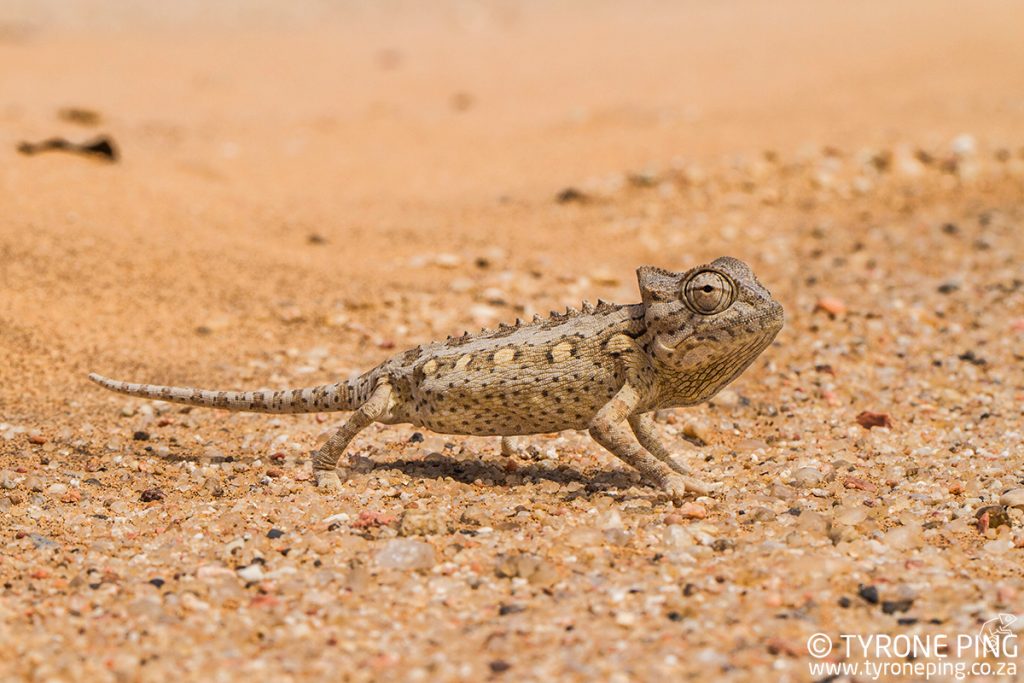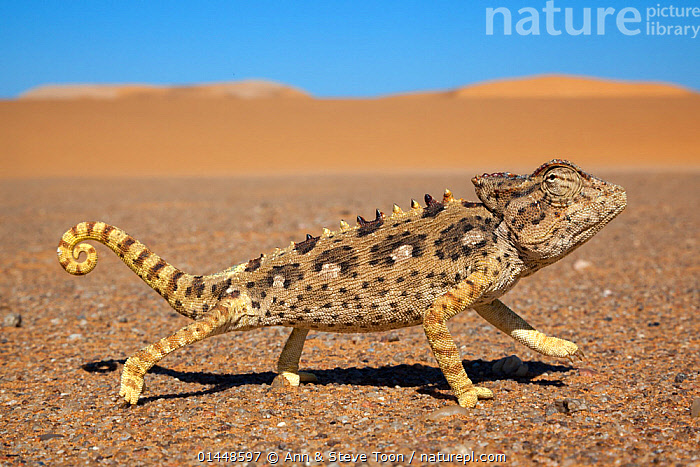General info
Size: It can grow up to 25 cm long.
Color Change: Dark/light brown color for camouflage and regulation of body temperature.
Diet: Primarly insects, spiders.
Speed: Unusually fast for a chameleon, to navigate through the hot desert.
Behavior: often burry itself in sand to escape the extreme desert temperatures.
Picture

Namaqua Chameleon. From Namib Desert, Namibia.
Anatomy
Chamaeleo namaquensis is one of the largest chameleon species in southern Africa. Females are larger than males, though the latter are proportionately more robust and have larger heads, as well as a bulge under the tail base. Its tail is far shorter than its body. It has large dorsal spines and a prominent, pointed casque on the back of its head. Like many chameleons, this species has nasal salt glands which excretes excess minerals such as sodium chloride and potassium. It has hygroscopic skin. It can drink moisture in contact with its scales through capillary action.
About chameleons
Chameleons or chamaeleons are a distinctive and highly specialized clade of Old World lizards with 200 species described as of June 2015. The members of this family are best known for their distinct range of colours, being capable of colour-shifting camouflage. The large number of species in the family exhibit considerable variability in their capacity to change colour. For some, it is more of a shift of brightness for others, a plethora of colour-combinations reds, yellows, greens, blues can be seen.


